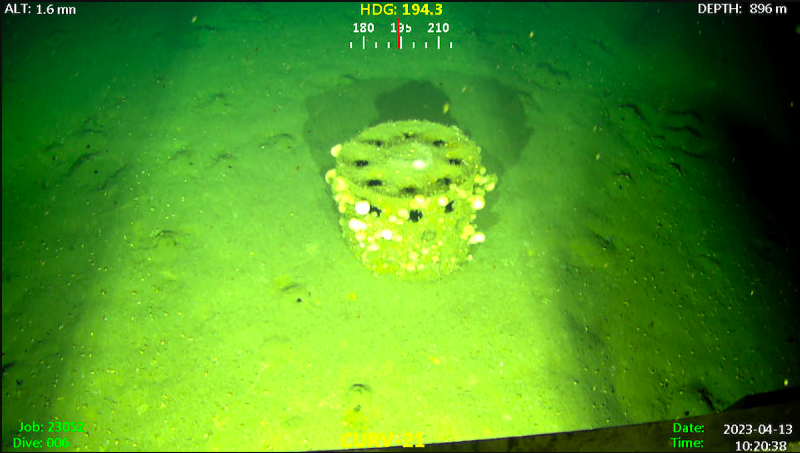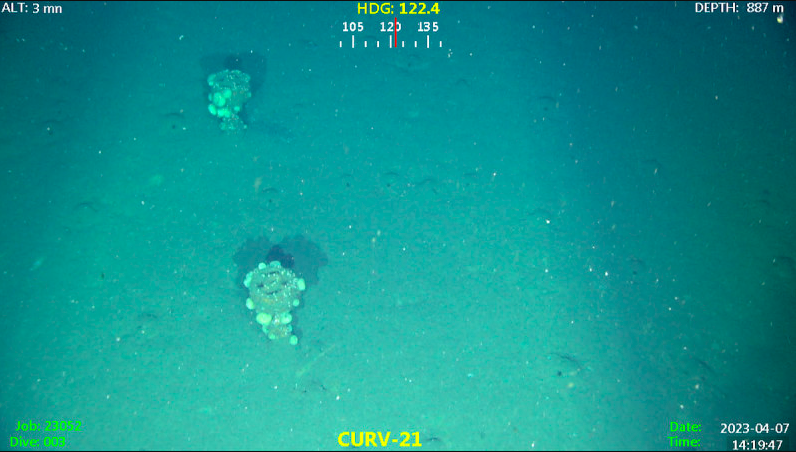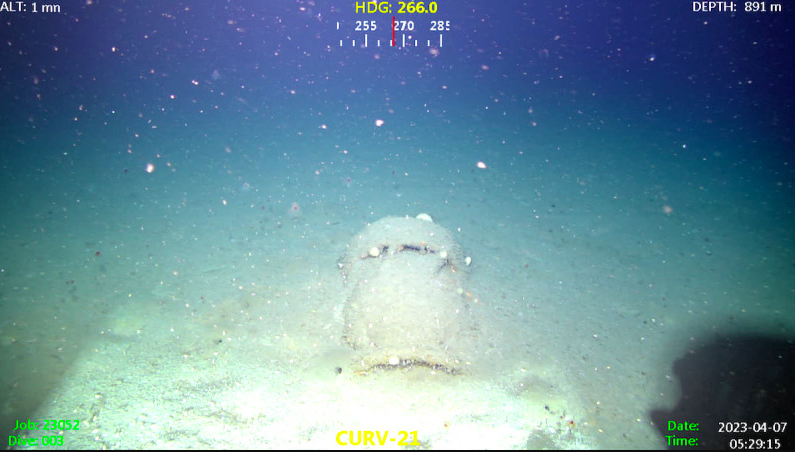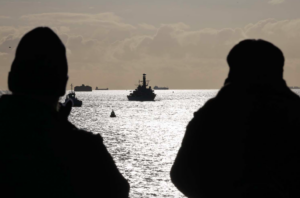Discarded WW2 military munitions found off Californian coastline

Researchers from UC San Diego’s Scripps Institution of Oceanography have revisited two industrial undersea dumpsites in the San Pedro Basin to identify objects discarded on the seafloor.
The first time they looked at the area was in 2021, and now they’ve found multiple types of discarded military munitions and pyrotechnics across an area of 350 square kilometres (135 square miles). Barrels from the legacy of industrial dumping, and several old fishing vessels were also found.
The undersea dumpsite, which the US Navy calls ‘approved’ was examined by sonar survey using a deep water autonomous underwater vehicle (AUV).

Between the 1930s and 1970s, the site was a known location for industrial dumping, says Scripps Institution, including byproducts from the manufacturing of the pesticide DDT. It was initially surveyed using robotic vehicles by the same team in April 2021.
The second survey’s goal was to extend maps of the seafloor using higher resolution acoustic sonar imaging techniques, to apply video imaging systems to classify objects in a previously mapped debris field, and to collect observations of deep sea ocean currents. With that achieved, the research team says that the barrels on the seafloor from the legacy of industrial dumping were found to be concentrated in two locations, and barrels were not pervasive across the dump site. (The 2021 survey documented thousands of barrel-sized objects organised in lines across the basin.)
Sixty barrels of DDT among munitions dumped
The survey data follow ongoing studies by UC Santa Barbara’s David Valentine, who in 2011 and 2013 discovered concentrated accumulations of DDT in the sediments and visually confirmed 60 barrels on the seafloor. Valentine is currently mapping DDT in sediments collected across the San Pedro Basin as part of the same project as the seafloor survey.
“Our preliminary findings of our analysis of sediments are showing that bulk dumping of DDT acid waste was the norm, that DDT immediately entered the environment and was likely not in barrels,” says Valentine, who in a 2019 study characterised the disposal of DDT waste as ‘inherently sloppy’.
“Once dumped, DDT spread at the seafloor, expanding its footprint to at least the base of the Catalina slope. We are finding that original DDT remains abundant in the seafloor today, in both absolute and relative terms.”
Support from US Navy to map dumped munitions
This latest part of the project took place with support from the US Navy’s supervisor of salvage and the Office of Naval Research.
“The resolution of the sonar provided by the US Navy supervisor of salvage provides us an unprecedented map of the seabed which will take some time to fully appreciate and analyse,” says Eric Terrill Scripps oceanographer, who, along with Sophia Merrifield, led the project.

“Our survey provides an opportunity to develop and apply analytical techniques to acoustic and optical imagery over wide-areas,” says Merrifield. “We anticipate these datasets will inform additional studies addressing impacts of dumping activities on the marine food web.”
“These munitions are likely a result of World War II-era disposal practices,” says a navy statement. “While disposal of munitions at sea at this location was approved at that time to ensure safe disposal when naval vessels returned to US ports, the navy follows Department of Defense guidance for the appropriate disposal of munitions that aligns with state and federal rules and regulations.”
The navy will also be reviewing the findings to determine the best path forward to ensure that the risk to human health and the environment is managed appropriately and within applicable federal and state laws and regulations.
Protection of marine environment in mission-essential
It continues: “The navy is reviewing the findings and determining the best path forward to ensure that the risk to human health and the environment is managed appropriately and within applicable federal and state laws and regulations. The navy is committed to continuing to balance our critical national defence training and mission requirements with environmental stewardship. Navy policy dictates that protection of the marine environment is mission-essential. Navy ships must conduct operations, in port and at sea, in a manner that minimises or avoids adverse impact on the marine environment and its resources.”
Read all the latest articles from Marine Industry News about the marine environment.
Seven whale falls confirmed during mapping of dumped munitions
While the munition dump site work was underway, the researchers also mapped whale falls. These are sunken whale carcasses. A total of seven whale falls were confirmed with video imagery, but the sonar data suggests more than 60 may exist in the footprint of the survey data.

“The number of whale falls seems quite high relative to previous models of how many may occur on the seafloor off California,” says Scripps Oceanography marine biologist Greg Rouse. “However, the skeletons were mainly in very low oxygen water that likely slowed decomposition markedly and the burial rate by sediment may also be very slow there. This would mean the whale falls may have accumulated over many decades.”
Read the latest news about whales from Marine Industry News.
All images courtesy of UC San Diego’s Scripps Institution of Oceanography.











